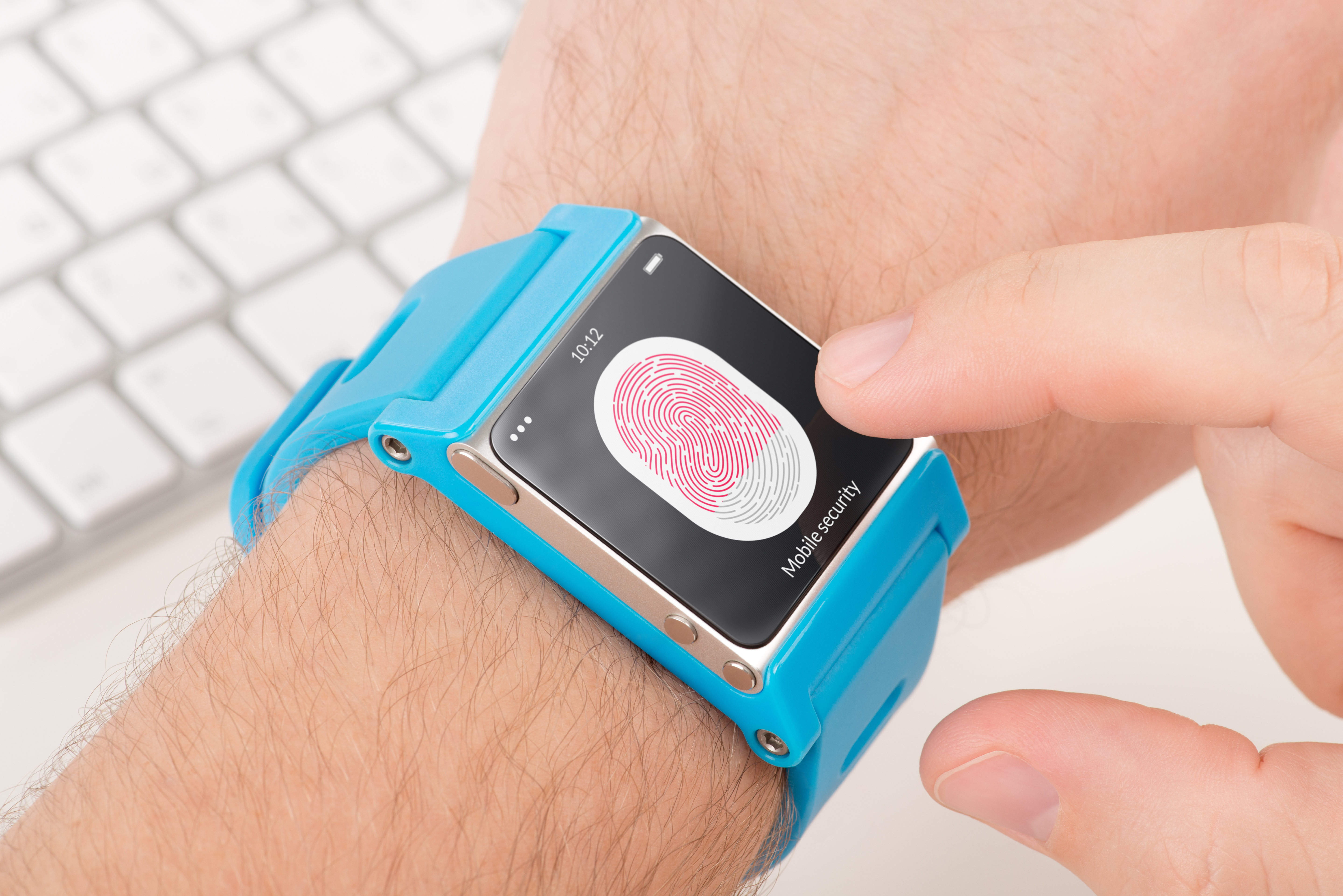
MONDAY 29TH JANUARY 2024
4 Medical Technology Market Predictions for 2024
For over 50 years, Densitron has been at the forefront of high quality display and touch-based interfaces and computers.
2023 was a fantastic year for us in the medical space. We premiered our brand-new solutions to a range of medical market audiences around the world, including CompaMed in Germany and Medix in Japan. So, we’ve been able to keep our finger on the pulse and our ears to the ground on all things in the medical device market, as we welcome 2024.
In this blog, we’ll take you through what we think are the biggest growth areas that we will see in the MedTech market this year, as well as the opportunities for the medical display market as the display and control technology requirements evolve throughout the medical industry.
The general outlook for the medical device industry is extremely optimistic, with a projected worldwide income of $595 billion by 2024 [1] and a CAGR of 6.1% from 2022 to 2030 [2]. The following list highlights the healthcare sectors that are anticipated to experience the most significant growth in the medical device field in the upcoming years:
Cardiovascular
Orthopaedic
Neurovascular
Urological
Diabetes
Ophthalmology
Medical Device Trends in 2024
Continued rise in digital therapeutics and ‘at-home’ diagnostics (Point of Care)
Growing use of biometric devices and wearable technology
EU marketplace to further support of digital health innovation
Generative AI to further reduce burden on healthcare professionals
Let's take a look at these in further detail...
1. Rise in Digital Therapeutics and At-Home Diagnostics
Digital therapeutics are software-based medical devices. AI devices help clinicians virtually treat, manage, and prevent many diseases and disorders.
These tools enhance the effectiveness and availability of treatment by allowing patients to oversee their own health, without sacrificing the caliber or norms of the care provided. In a poll conducted among MedTech chiefs[3], 63% concurred that digital therapeutics will significantly influence the sector in the coming decade. The U.S. digital therapeutics market is projected to experience a compound annual growth rate of 29.8% from 2020 to 2025, as per Frost & Sullivan [4].
At-home diagnostics are closely related to digital therapeutics. Although they fall into the medical device category, these devices are not necessarily AI-based and are designed specifically to diagnose potential conditions or diseases.
During the pandemic, COVID-19 tests were widely distributed throughout the globe to people’s homes, and people grew accustomed to self-testing. This caused the in-vitro (IVD) diagnostic market to undergo a massive growth spurt, though as we have moved farther from the pandemic, this market has slowed down considerably. However, this surge has highlighted a potential growth area for home-based diagnostic tests beyond just COVID testing, with forecasts of continued upward trends.
The consistent growth of in-home diagnostics has inevitably led to ‘non experts’ increasingly interacting with these tools. As such, the importance of perfecting the user’s HMI experience has never been greater.

2. Biometric Devices and Wearables
The popularity of wearable and biometric technology has been on a consistent rise for several years. The worldwide market for this technology is projected to hit $161 billion by 2033, with a CAGR of 6% from 2023 [5].
From widely used wearable tech like Fitbits and Apple Watches, to more specialized devices such as electrocardiography (ECG) sensors, photoplethysmogram (PPG) sensors, and hydration and sweat sensors, these gadgets offer a unique ability for consumers and patients to take control of their health.
The growing public interest and demand for these products not only provide an opportunity for medical device companies to successfully sell directly to consumers, but also pose a challenge as they have to compete with major tech companies aiming to penetrate the healthcare sector.
The healthcare sectors currently at the forefront [6] of wearable technology adoption encompass: audiology, health science, kinesiology, nursing, occupational therapy, pharmacy, and physical therapy. Despite the swift emergence of new devices, the market is far from being fully exploited. There are plentiful opportunities for inventive medical device firms that can develop a wearable or biometric device that offers value to users, while alleviating strain on hospitals and healthcare institutions. The wearable device sector is also witnessing heightened innovation due to the rise in generative artificial intelligence [7] (genAI) that produces synthetic data, along with other AI-driven technologies.
Densitron has responded, and proactively anticipated change throughout our history. Our extensive display catalogue includes display sizes that are most popular in the biometric device and wearables industry.
3. European Marketplace Challenges
Historically, it has been challenging for medical device companies to supply their products into European markets, mostly due to strict medical device regulations (MDRs) in the EU and the UK. Both the EU and UK were supposed to come out with updated MDRs in 2024. However, the EU is now looking to delay the compliance deadline for its renewed MDR by several years, as there are insufficient resources to meet the deadline required by law, and the EU would face potentially critical medical supply shortages if they stick to the current deadline.
With all of these regulatory changes to keep track of, medical device companies are leaning away from EU and UK marketplaces and turning towards the U.S. marketplace [8]. The U.S. FDA has traditionally been seen as more supportive of innovation and has implemented processes to help smaller companies and start-ups get their products efficient market clearance. Small companies and startups make up such a large percentage of medical device companies and are disproportionately responsible for digital health innovation. European regulatory agencies will need to find ways to accommodate these companies’ specific needs or else risk stagnation in their medical device markets.
Historically, the medical device industry was not heavily focused on diversity and representation in their data. In recent years, however, there has been a larger discourse about the importance of an evidence-based approach and taking the diversity of potential users into account.
In the past, medical devices were designed with demographics living in developed countries in mind, companies are now further considering that the way people react to medical devices could depend on a variety of societal and demographic factors. Formerly, health conditions in developing nations often progressed much further before patients received treatment, whether due to lack of education and awareness, poor healthcare access, or lack of proper technology.
This means that while there is a huge opportunity for medical device companies to enter these developing nations’ markets, they cannot simply bring over the same devices and technologies that were created with developed countries in mind. Rather, they must contend with an abundance of new considerations and ensure that their solutions are tailored to their end users.
Densitron is privileged to have both product and commercial teams across the EU, the US and beyond, which allows us to react quickly and efficiently to our customer’s needs.

4. Generative AI Opportunities
GenAI is the latest innovation that has swept across almost all sectors. Within the MedTech field, generative AI holds the potential to significantly enhance productivity, reducing the burden on healthcare professionals and bettering patient results. The artificial intelligence (AI) in healthcare market is expected to expand at a CAGR of more than 30% [9] until 2030.
With further reliance on data and a turn to AI software, it is imperative that medical device and displays are inch perfect. Whether the challenge is a cover glass application, gloved touch sensing or a zero-pixel defect visibility, Densitron has the experience and the know-how to deliver
Forecast for Medical Device Sector for 2024 and Beyond
The MedTech sector, especially the medical device field, is currently experiencing a swift phase of evolution and expansion. This industry is not only one of the most inventive, but it also holds the distinctive potential to entirely transform global healthcare and alter the way humans interact with their own health.
In-vitro diagnostics (IVD) are projected to continue being the leading segment in 2024 [10], with neurology anticipated to be the quickest expanding device specialty. Excluding IVD, the predicted top 10 device sectors by sales in 2024 include: cardiology, diagnostic imaging, orthopaedics, ophthalmic, general and plastic surgery, endoscopy, drug delivery, dental, and diabetes care. Diagnostic imaging and orthopaedics are forecasted to be the slowest-growing segments in the coming year.
While the future growth prospects of the medical device sector are promising, the regulatory landscape is a crucial factor to consider. It's imperative for medical device firms to collaborate with regulatory bodies and industry specialists to guarantee their products adhere to all required standards and are utilized in a safe and effective manner.
In conclusion, MedTech and medical device firms aiming to stay competitive against progressive rivals [11] need to embrace digital transformation, artificial intelligence, and automation. These technologies are not fleeting trends, and their integration could be the deciding factor between emerging as an industry frontrunner and becoming outdated.
Resources:
[2] U.S. Medical Devices Market Size, Share | Analysis Report, 2030 (fortunebusinessinsights.com)
[3] DI_LS-survey-medtech.pdf (deloitte.com)
[4] Key Trends in Digital Therapeutics – Endpoints News (endpts.com)
[5] Wearable Technology Forecasts 2023-2033: IDTechEx
[6] Wearable Tech in Healthcare: Top Devices Making a Difference in Medical (edumed.org)
[7] Generative AI in Healthcare: Use Cases, Benefits, and Drawbacks (alpha-sense.com)
[8] US FAVORED OVER EU FOR MEDICAL DEVICE MARKET ENTRY - Alvamed
[9] AI In Healthcare Market Size, Share & Growth Report, 2030 (grandviewresearch.com)
[11] Analyzing Expert Transcripts: 4 Trending Conversations in MedTech | AlphaSense (alpha-sense.com)

Contact us
For more information about Densitron or any of our products and services please contact one of our regional offices or contact@densitron.com